
Mark-Making: 5 Abstract Painters You Need To Know
Trends in Contemporary Art
Further, sometimes there is a rather negative connotation attached to this term of the art world, as it is often associated with elite circles, exclusive events and venues, and the billion-dollar industry evoking mixed feelings in public opinion once more when it comes to the ambiguous relationship of art and money. As a result, the art world is a very broad and vague container concept used in different contexts with different connotations and meanings, so it has increasingly challenging to define and address its content specifically.
Therefore, this article presents a complete and industry-approved overview of the most important actors and entities in all their different shapes and forms. We have identified the three main spheres of the art world; the commercial art world or the art market, the critical or institutional art world, and, to conclude, the numerous individuals navigating between both spheres.
Let’s start with the art world’s more commercially oriented sphere: the art market. In this case, the most important entities are the art galleries, the art fairs, the auction houses, and online marketplaces. However, all these entities come in different shapes and forms, and depending on the state or type, their role or function in the art world differs. Therefore, let us have a closer look at these four segments of the commercial art world.
We start with one of the most important commercial entities of the art world, especially when it comes to the primary market—meaning all art that is introduced for the very first time to the art market, the direct link between the artist and the art world (however please note numerous art galleries are also active in the secondary market).
In our extensive article on the art gallery, we have defined the gallery as an exhibition space and commercial to display and distribute artworks, working with a specific portfolio of artists. However, there are different types of art galleries with different focuses, sizes, or ways of operating. Let’s start with the most common type of gallery; the traditional commercial art gallery.
Even though the word ‘commercial’ once more carries an often negative connotation with the obstinate stereotype of the money-grubbing gallery director in public opinion, these galleries actually help artists earn a living. They offer the opportunity to show and sell their work, representing and supporting the artist, working towards long-term success, and enabling the artist to pursue their artistic ventures without worrying about the commercial side. The gallery makes money when the artist makes money as they invest in their career. Because what is suitable for the artist will also be good for the gallery representing the artist.
When those galleries become increasingly influential, scaling their business and program, having various locations across the globe and a vast amount of staff members, these commercial galleries have become mega-galleries—the absolute top layer of the gallery industry in the art world; think of David Zwirner, Thaddaeus Ropac, Gagosian, Pace Gallery, or Hauser & Wirth. In this case, in a way, these galleries have become institutions with a very diverse role in the art world, from representing artists to keeping the legacy of an artist’s estate alive, advising and supporting museums, to contributing the recent art historiography with their in-house publishing activities.
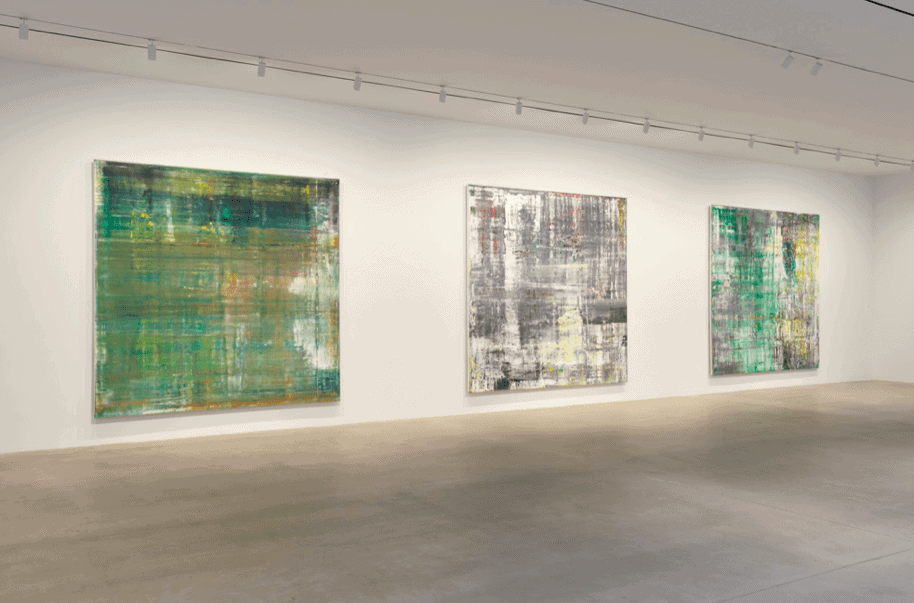
Next, we have the vanity art gallery. The vanity art gallery looks like a commercial art gallery, but its business model has a different orientation. Instead of making money on a commission basis, they charge the artist to exhibit at their gallery, often with an additional commission fee when the artist generates a sale. As a result, these galleries are making money on behalf of the artist instead of supporting them, curating their program based on the size of the artist’s wallet.
A fourth type of art gallery is the artist-run gallery. In this case, the artist or a group of artists have their own exhibition space where they curate a varied exhibition program independently, creating a platform for themselves—most often due to a lack of exhibition opportunities, taking things into their own hands. As a result, this can sometimes be rather frowned upon due to the role conflict between the artist and dealer. However, there have been some tremendously successful artist-run galleries where that gradually develop into commercial art galleries.
Another type of art gallery is the art store. In this case, there is an exhibition space or store where they showcase and sell art. However, the art objects are seen and approached as decoration or commercial goods, and the business model follows the traditional store model in which the different artists and artworks come ago without a clear vision or curated program. So here, we are moving further away from our initial definition of the art gallery and its role and position in the art world.
To conclude, we have exhibition spaces often referred to as galleries. However, with these spaces, the artist must temporarily rent the space and organize the exhibition by themselves. Here, as with the vanity art galleries, there is no curated exhibition program, and the business model is based on making money on behalf of the artist. And even more, the other tasks of a gallery are also for the artist.
For a more thorough take on the different types of galleries, you can just read our article The Art Gallery: Everything You Need To Know. Or, if you would like to discover the most influential mega-galleries in the art market, read our listicle Top 10 Biggest Art Galleries in the World next.
Another major part of the commercial art world is the art fair industry. Art fairs are events where multiple galleries and dealers from across the globe exhibit in separate booths under the same roof, making these events ideal for commercial and networking purposes. It is an excellent opportunity for collectors, dealers, critics, curators, and art enthusiasts to see a wide range of artists and galleries that are usually spread across the globe during one single event at one location.
Art fairs are often criticized for their commercial character, exuberance, the sheer volume of art, and social events to climb in status in the art world and beyond. Even more, most art fairs across the globe all look pretty similar. They are hosted in a large hall with similar-sized booths, a section with emerging galleries, and a section with the established and usual suspects: Perrotin, Lehmann Maupin, or Galerie Lelong. Nevertheless, they are essential for the art industry. Art fairs are great places to sell and collect, but the entire art world also comes together under the same roof, showcasing the latest art by the most influential artist, hot of the press, in a vibrant environment.
Some of the most important international art fairs are ArtBasel, traveling from Basel to Miami, Paris, and Hong Kong; the Armory Show in New York; Frieze Art Fair in Seoul, New York, Los Angeles, and London; TEFAF in New York and Maastricht; Art Brussels; BRAFA in Brussels; ARCO Madrid; the Dallas Art Fair, Art Dubai; and many more.
Further, besides these internationally renowned art fairs, there is also an entire industry of art fairs and festivals focusing directly on the artists instead of the galleries. In this case, instead of having a strict selection process in which only top-quality art galleries are allowed to participate in the fair, any artist can represent themselves by hosting their own booth at the fair or festival. Especially in the United States, numerous artists focus on these art fairs to earn a living as an artist.

Whereas art galleries and art fairs predominantly focus on the primary market, auction houses facilitate sales on the secondary market—meaning all sales after the first sale. They act as the intermediary between the current collector of the artwork and the next, bringing it to the free market and providing the ideal environment and setting to achieve as many potential buyers as possible. In return for these services, the auction house earns a commission on the sale, approximately 10-15%.
The holy trinity of the art world when it comes to auction houses consists of Christie’s, Sotheby’s, and Phillips—three industry-leading auction houses that have taken care of the most significant sales in the art world; think of the $450 million Salvator Mundi by Leonardo Da Vince at Christie’s in New York, Sotheby’s selling the prestigious Macklowe Collection for a total sum of $922 million, or the $57 million Jean-Michel Basquiat Untitled (Devil) at Phillips.
At an auction, prices can rise to astronomical heights as the highest bidder determines the price, resulting in exciting bidding wars and mind-boggling sales. Whereas the price range is very predictable in the primary market, the secondary market is less regulated and more challenging to predict. One must understand that these artworks are often rarely offered on the free market, and after the hammer, who knows if it will ever come to auction again? Therefore, when a masterpiece is presented at auction, it is a once-in-a-lifetime opportunity for private collectors to acquire such a piece, pushing the price up once more.
The auction house offers expertise, accommodation, staff, a collectors base, and a network. They value the pieces, market them, document them, analyze the market trends, and ensure they achieve the price it deserves—if not, the repercussions can be disastrous for the market of that particular artist; hence the galleries monitor the secondary market closely. After all the preparations, the bidding starts for a specific duration or until we have found the highest bidder—in person, online, or on the phone. To conclude, auction houses also facilitate private sales between two collectors, appraisals, and advisory services, supporting their clients and playing a crucial and trustworthy role in an engaging, thriving, competitive, and transparent part of the art market where all the biggest sales occur.
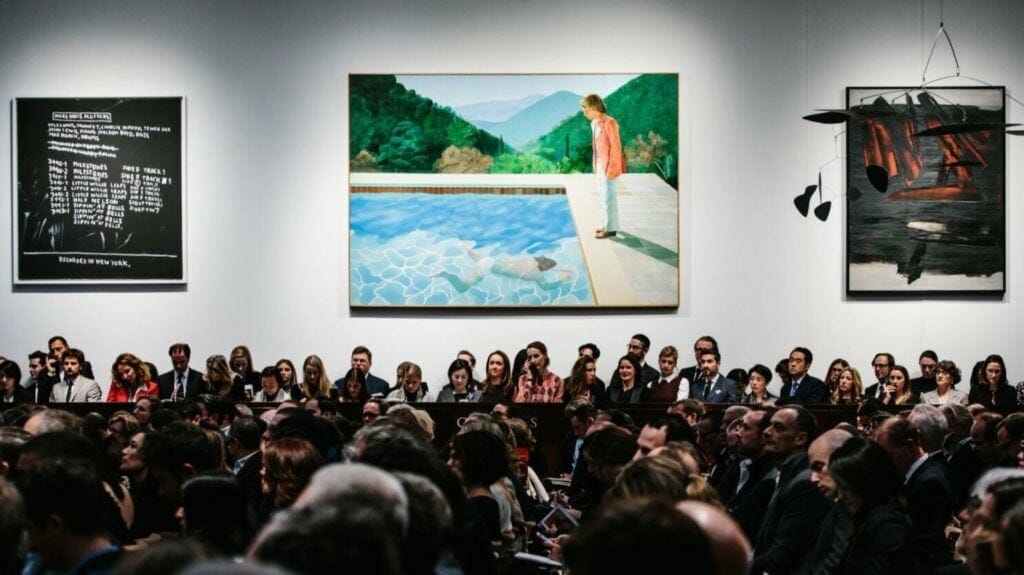
We conclude our first sphere of the art world—the art market—with a more recent phenomenon; online marketplaces. Since the advent of the Internet, purchasing and selling art has moved beyond the galleries, art fairs, and auction houses into the online world of the World Wide Web. Online marketplaces for art have continued to emerge to this day, resulting in an enormous amount of online sales across the globe.
The online marketplace for art is a digital platform where collectors can browse and acquire works of art that have been put up for sale by galleries and artists. By doing so, the online marketplace acts as a digital intermediary and earns a commission per sale, ranging from as little as 4% up to %35—or on a subscription basis. The art market share’s online sales have been increasing yearly—especially since the Covid-19 crisis when it became impossible to visit galleries and discover new art, or acquire it, so it had to take place online.
Furthermore, one can distinguish three different types of online marketplaces. First and foremost, dealer-oriented online marketplaces such as Artsy and 1stDibbs, where only renowned dealers can access their program. As a result, we encounter a very high-end selection of artists on those platforms, with Artsy being the most important online marketplace for contemporary art in the art world. Here, most often, the commission is low, and the platform sets very high standards to ensure a quality and trustworthy experience for collectors.
Next, we have curated online marketplaces. In this case, the online marketplace acts as the dealer and directly contacts the artist. One could argue they are an online gallery with a very extensive portfolio of artists without curated exhibitions. The fees are generally a bit higher here, and we have started to focus more on quantity—more artists equals more sales. Whereas the dealer-oriented online marketplaces offer works of art by artists with gallery representation, most artists on these curated online marketplaces work with these platforms because they do not have gallery representation yet. Examples of curated online marketplaces are Singulart, Mutualart, and Artistics.
To conclude, we have open online marketplaces, meaning any artist without approval, regardless of the quality of their work, can join the online marketplace and upload their works as available for sale. These platforms focus even more on quantity, and much of the work could be better in quality as there is no selection process. As a result, open online marketplaces are strongly oversaturated and not reputable in the art world. Well-known examples of open online marketplaces are Saatchi, Fine Art America, and ArtPal.

Whereas the commercial sphere of the art world—the art market—organizes exhibitions and events to drive sales, the critical or institutional art world focuses on cultural, critical, and educational purposes. However, they are firmly bound together. Institutional exhibitions or critical honors will raise the value of a specific artist’s career, and institutions often collaborate or depend on the galleries to make their shows happen. Further, some of these entities in the critical art world are also commercially oriented, as they come in various shapes and forms. Therefore, let us expand on the most important entities and how they operate or vary individually.
First and foremost, in the critical art world, we encounter a series of exhibition-oriented institutions pursuing those cultural and educational purposes we mentioned in our introduction. The best-known type of entity is, of course, the art museum. Art museums are public institutions funded and owned by the government or a local entity. They are dedicated to preserving, studying, and exhibiting the museum collection—often in combination with temporary exhibitions—as a cultural and educational service to the public. Besides documenting and taking care of the permanent collection, they also aim to expand it, working closely with renowned art galleries, artists, or patrons of the arts.
Museums aim to provide an accessible and engaging artistic environment for discussions, lectures, workshops, and educational programs. Every museum has its own focus, which can shift slightly as the years go by. Some museums aim to present the canon of art history with their permanent collection, such as the Louvre in Paris or the permanent collection of the Museum of Modern Art in New York. Others focus on one particular artist or style, such as the Musée Rodin in Paris or the Van Gogh Museum in Amsterdam. And in addition, there are also art museums focusing only on temporary art exhibitions, tackling a specific theme, period, artist, idea, or issue with every new show; think of MoMA PS1 or the temporary shows as the Centre Pompidou in Paris.
Up next, we have the art foundations, institutions dedicated to supporting and promoting the arts, founded by established and wealthy corporations, families, or individuals. Please think of the Fondation Louis Vuitton, the Dia Art Foundation in New York City, or the Solomon R. Guggenheim Foundation with its museums in New York, Bilbao, Abu Dhabi, and the Peggy Guggenheim Collection in Venice. They curate prestigious exhibitions—showcasing both established and emerging talent—offering cultural and educational programs, supporting artists directly by providing grants, residencies, and scholarships, or helping other institutions by donating funds or artworks to their collections. The term art foundation also exists in a purely educational context, as a program or course of study in the arts.
To conclude the exhibition-oriented institutions or entities in the critical art world, we have other non-profit organizations. Think of (local) art spaces and houses curating temporary exhibitions for cultural and educational purposes, funded by patrons or running on public funds. They support and promote artists and save in the public interest. Art foundations and art museums are also examples of non-profit organizations, but there are also non-exhibition-oriented non-profit organizations focusing on residencies, studios, awards, education, and more.
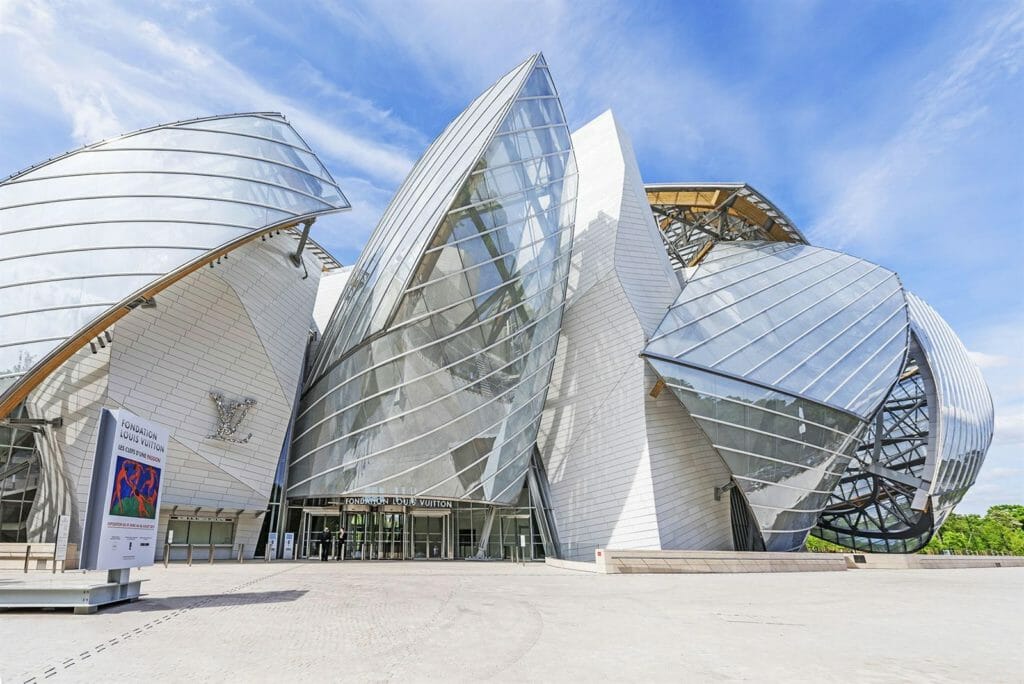
Next, we have artist-oriented institutions; the artist foundations and artist estates. These entities manage, preserve, and monitor the artistic legacy of artists—often after their passing. They keep the artist’s legacy alive and relevant, ensuring activity in the form of participating in or organizing exhibitions, publishing catalogs, maintaining the archives, taking care of licensing, posthumous reproductions, authentications, and thus more longevity for the artist’s career and the value of the artworks.
The artist’s estate or foundation is established during their lifetime or posthumously by their family, who have inherited the intellectual property rights and the personal effects the artist left behind—including unsold pieces. The estate is often owned by the artist’s family but managed by a trustee or president. They continue to work with the galleries representing the artist to generate sales and institutions to take care of loans for exhibitions and donations so the works find an ideal destination. Well-known examples include the Andy Warhol Foundation, the Estate of Mark Rothko, the Frida Kahlo Estate, the Keith Haring Foundation, and many more.
Art events and opportunities—often hosted or organized by institutions, non-profit organizations, and in some rare cases, commercial entities—are recurring events to distinguish the best artists today, having their finger on the pulse of the art world and often focusing more on emerging talent than established household names. These events and opportunities are milestones in the artist’s career, as they are a form of validation and critical recognition.
Let’s start with the art events offering critical recognition and hot of the press art; think of the biennials, triennials, festivals, and more. Arguably the best-known, long-running, and most prestigious art event is the Venice Biennale, organized by the autonomous cultural institution La Biennale di Venezia, showcasing today’s most prominent artists every two years in Venice. The institution is funded by the Italian government, private foundations, and corporate sponsors to create non-commercial exhibitions over the entire city, appointing renowned curators to shape and direct the event, main show, and the various pavilions.
By doing so, the Venice Biennale is a significant event for critical recognition—especially considering the Golden Lion awards for the stand-out artist or lifetime achievement. They provide a platform for the most exciting artists, influential curators, and the art world to engage in a dynamic dialogue on contemporary art. And there are numerous similar leading art events across the globe; think of Documenta in Kassel, Germany; the Whitney Biennial in New York, the United States of America; or the Istanbul Biennial in Turkey.
Other entities related to critical recognition are the art opportunities for artists, think of grants, stipends, residencies, awards, open calls for exhibitions, and more. These different art opportunities come in various shapes, forms, and organizational structures, with some being yearly and others one time only; some are organized by a non-profit organization funded by the government, and others are organized by commercial entities that aim to make a profit. However, generally speaking, the first will be more significant in the art world than the latter.
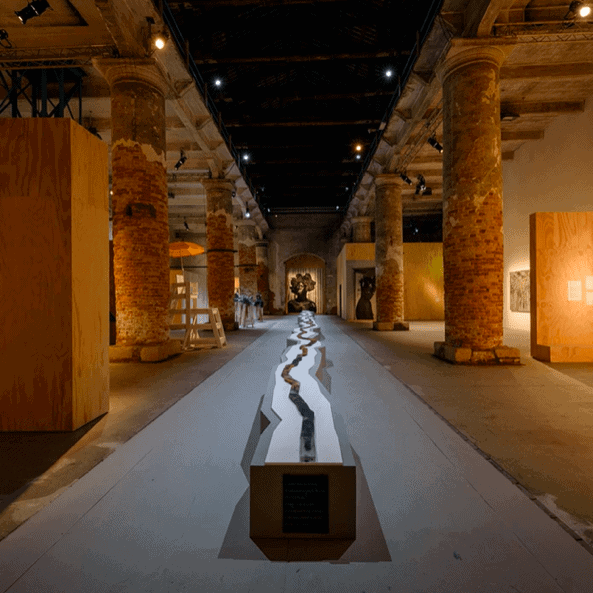
To conclude the critical art world, various publishing entities actively contribute to, promote, and share contemporary art; think of art book publishers, periodicals as contemporary art magazines, and online platforms. The written word and printed press are vital players in the art world in reviewing exhibitions, promoting upcoming artists, canonizing the oeuvre of an established artist in a monographic publication, and much more.
Renowned art book publishers are, for instance, Phaidon, Taschen, Thames & Hudson, Prestel Publishing, Hatje Cantz, Skira Editore, and others, often working in collaboration with various institutions to present recent surveys about contemporary art in books, or to create a monographic publication on the occasion of a major retrospective. They focus on canonizing art today and recent art historiography.
The art magazines focus more on various affairs, such as gallery exhibitions, art fairs, and art news in general, but also offer a platform for up-and-coming artists—as do the online platforms. Renowned art magazines are Aesthetica Magazine, CURA., ArtReview, Flash Art, Artforum, and many more. Well-known online art platforms are Widewalls, Koonness, My Modern Met, and our very own Contemporary Art Issue.
Last but not least, we have various individual actors working in the art world, navigating and operating between those various entities in the different spheres of the art world, filling in the necessary positions, roles, and vacancies to keep the art world running.
Needless to say, without the artists, there would not be an art world to begin with. All those creative minds dedicate their life to their medium, vision, or art in general, bringing us joy, solace, or reflection, adding color to the world, and elevating various materials into enigmatic and intriguing collectible objects.
Feel free to read our article on the different types of artists next.
Next, we have creative minds and thinkers who do not necessarily have to urge to create with their hands but are creative in writing or organizing exhibitions to offer interesting perspectives on contemporary art. Without them, there would be no press releases to read in the galleries, no curated temporary exhibitions in the museums, no essays in the art magazines, no research as a benchmark for an unseen artwork art auction, and no personality when it comes to taking care of everything related to art—from writing to speaking, artistic direction to guiding. Therefore, curators and art critics are essential in the art world to add value and content when experiencing art.
Feel free to read our article on curating next.
When it comes to collectors and patrons of the arts, they often seem less involved in the art world, but they are an integral part of keeping the art world running. They visit the exhibitions, fund the exhibitions, support the artists, and much more. Numerous patrons have dedicated their funds to large institutions or gifted their impressive private collections to a museum collection so all of us can enjoy those wonderful art pieces. Behind every successful artist, a vast group of collectors has followed and supported the artist throughout their career. In this sense, success in the art world is very democratic. In the first place, it isn’t the so-called gatekeepers, such as the galleries and institutions, dictating what good art is, but the people, the collectors. Galleries will not showcase artists that do not sell well, nor will museums organize exhibitions nobody visits. Therefore, more than we realize, collectors, patrons, and art enthusiasts in general are essential and influential.
And to conclude, there are so many other positions to be filled in the art world of art professionals, from the photographers documenting the art to the art handlers taking care of the transportation. From the art advisors to the PR agencies. And by doing so, all the dots are connected, and the complex web of people connected through art takes shape, as does the art world.
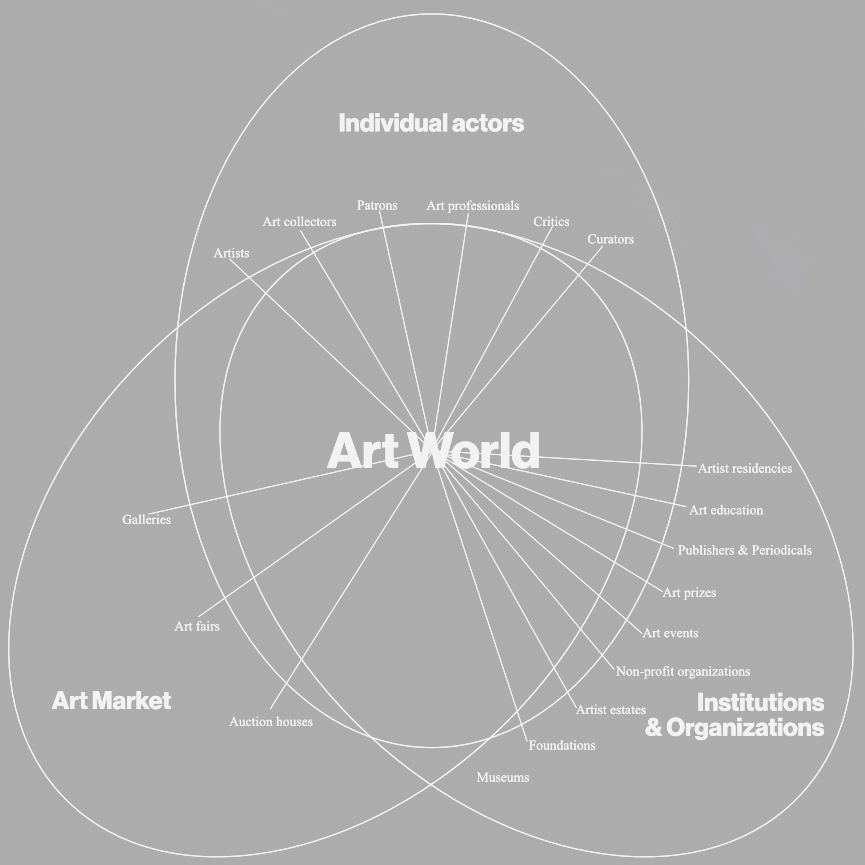
Last Updated on July 12, 2024

Trends in Contemporary Art

A Complete Guide

Touching the Invisible

A Reasoned Anthology